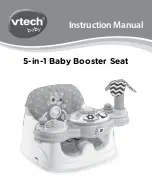
P1512137 R3
49
Failure to lock out power can cause severe injury.
1. Remove any product remaining in the hopper and spout with a vacuum or sweep out.
2. Remove debris from shafts, sheaves, and drive belts (as equipped).
3. Once the conveyor is empty of all product, check for damage on belt and lacing such as notches or cut outs.
Any damage on belt may result in product getting under it creating a build-up. If belt replacement and re-
lacing is necessary, refer to the Maintenance Section.
Important
Ensure the conveyor is free from all product and debris to prevent build-up. Any build-up on belt
and shaft becomes a source of spillage and can cause belt misalignment with the possibility of belt
edges sustaining damage on the fixed structure. Build-up on the hopper and spout will cause the
belt to wear faster due to drag.
4. Once cleaned out, cover intake to prevent moisture from collecting in hopper.
6.12. Conveying Fertilizer
Fertilizer may be conveyed using the conveyor when strictly operated at a reduced capacity and additional care
is taken to thoroughly clean the conveyor after operation.
Important
Fertilizer weakens the belt lacing and warranty is void on all lacing used with fertilizer. The belt lacing
may need to be replaced more often if you convey fertilizer.
Additional Operating Requirements
To prevent problems that can be caused by conveying fertilizer:
1. Do not allow fertilizer to fill over the edge of the belt. This will allow fertilizer to get under the belt and start
building up.
2. Reduce the flow if the conveyor belt starts to slip. Denser fertilizers will slow the conveyor belt down due to
the weight of the product. Too much material will cause the drive roller to slip and lead to additional wear
on the roller.
3. Do not move fertilizer with your conveyor in humid, wet or rainy conditions. This will cause buildup of
fertilizer under your conveyor belt.
Additional Clean-Out Procedures
Proper cleaning will help to ensure longer belt life and prevent excess rust formation.
1. Run conveyor empty at full speed for 5-10 minutes after conveying fertilizer. This will help ensure that any
product that may be under the belt will be cleaned out and prevent build up.
Do not attempt to manually remove build-up while conveyor is running.
2. Next, run the belt at low idle and inspect for damage on the belt and lacing, such as notches or cut outs
caused by mice and normal wear. Any damage on the belt may result in fertilizer getting under the belt
creating a buildup. Consider replacing the conveyor belt if it is in poor condition. If equipped with an electric
motor, inspect on the belt return side with the electric motor not running. Turn on the conveyor to expose
the belt that was previously in the tube. Turn off the conveyor and inspect the belt on the belt return, along
with the lacing.
S-DRIVE STANDARD CONVEYOR – PORTABLE GRAIN BELT CONVEYOR
















































